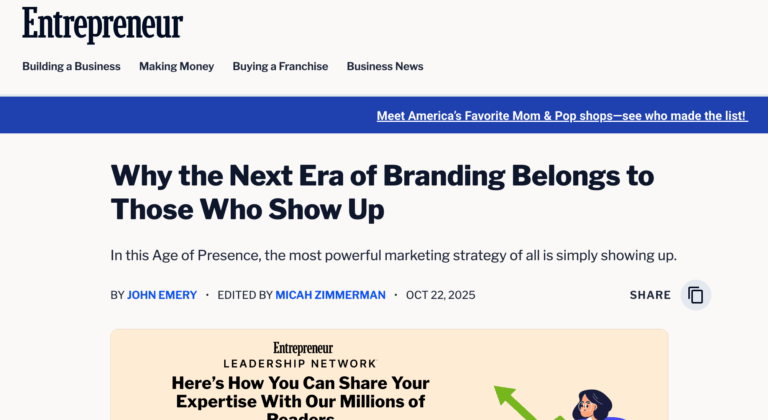Flush with funding and surging demand, compounding pharmacies are attracting capital from private equity firms, venture capital firms, and hospitals, reshaping the pharmaceutical power dynamic from the bottom up.
This is Part 2 of a two-part series on compounding pharmacies. In A Dose Of Disruption: How Compounding Pharmacies Are Challenging Big Pharma On GLP-1 Drugs And Drug Patents, we explored how compounders are rewriting the rules on GLP-1s and drug patents. Now, we turn to the capital behind the curtain—how private equity, venture capital, and hospital systems are fueling the rise of an alternate pharmaceutical infrastructure.
I. From Niche to Infrastructure: The Rise of Compounding
Big Pharma has long operated like a legal cartel—protected by evergreening patents, backroom pay-for-delay deals, and control over formularies that dictate which drugs insurers and hospitals will cover. It reinforces this dominance through aggressive lobbying, public relations campaigns, and billions spent on direct-to-consumer and physician marketing. But cracks are forming. Amid persistent drug shortages and growing demand for personalization, a quieter revolution is taking hold.
Compounding pharmacies, once the backrooms of mom-and-pop drugstores, are evolving into a multibillion-dollar infrastructure play. Investors are waking up to the fact that the next big pharmaceutical disruption may not come from the lab—it might come from the compounding bench.
II. A $10.76B Market Hiding in Plain Sight
Market forecasts peg the U.S. compounding pharmacy sector at $6.31 billion in 2024, projected to reach $10.76 billion by 2033, growing at a CAGR of 6.1%. This expansion is driven by drug shortages, telehealth, chronic conditions, rising consumer demand for personalization, and increased provider interest in patient-centered care.
Therapeutic Focus: Hormone therapy, dermatology, chronic pain, sexual health, pet meds, longevity and personalized medicine
Regulatory Categories: FDA 503A (traditional compounders), 503B (outsourcing facilities)
Key Players: Empower Pharmacy, QuVa Pharma, Leiters, VLS Pharmacy, PCCA
Risks: Sterility concerns, FDA scrutiny, lack of drug approval for compounded versions, state–federal oversight inconsistencies
Sources: BioSpace, Nova One Advisor, FDA, company websites
III. Why Investors Are Flooding Into Compounding Pharmacies
Compounding pharmacies address deep structural inefficiencies in the pharmaceutical system. They offer a flexible response to drug shortages and supply fragility, serve patients needing personalized or niche formulations, and operate outside the opaque pricing mechanisms dominated by just a few major pharmaceutical companies. For patients, they represent a more accessible and responsive alternative—especially in the context of rising telehealth adoption.
What makes this model particularly attractive to investors is its strong financial profile. First, compounded medications often treat chronic conditions like hormone therapy or dermatological issues, creating reliable subscription-based revenue. Second, many compounders handle their own fulfillment, bypassing pharmacy benefit managers (PBMs) and wholesalers—leading to significantly higher margins. Third, customer acquisition costs (CAC) are often low, thanks to prescriber-driven referrals and integrated telehealth platforms. Finally, regulatory arbitrage allows compounders to legally operate under FDA 503A and 503B exemptions—producing medications without full FDA approval, provided they meet specific patient or clinical use requirements.
IV. From Mortar and Pestle to Full-Stack Care Platforms
The legacy image of the compounder—splitting pills behind the counter—no longer applies. Today’s leaders are deeply embedded into healthcare infrastructure. These platforms don’t just fill scripts—they control the entire patient experience, from diagnosis to doorstep.
Vertical Integrators:
- Hims & Hers: Owns multiple 503A and 503B facilities, operates a peptide lab, fulfills GLP-1 and dermatology meds
- BlueChew: Delivers ED treatments via telehealth and in-house compounding
Platform Partners (Non-Owners):
- Musely, Wisp, Dutch: Rely on contracted compounders but fully integrate fulfillment into their digital health models
The competitive pressure isn’t just coming from startups. Giants like Amazon have entered the pharmacy space with mail-order prescriptions, fulfillment infrastructure, and its $1B+ acquisition of PillPack—reshaping consumer expectations around convenience, speed, and price transparency. While Amazon doesn’t operate in compounding, its presence adds urgency for verticalized platforms to differentiate through personalization and specialty formulations.
V. The Longevity Play: Personalized Medicine’s Next Frontier
Personalized medicine is no longer limited to tailoring doses—it’s becoming a cornerstone of the rapidly growing longevity economy. As wealthy consumers, biohackers, and digital health platforms chase enhanced immunity, energy optimization, and age reversal, compounding pharmacies are increasingly part of the protocol.
Biohackers like Bryan Johnson—whose multimillion-dollar quest to reverse aging includes aggressive biomonitoring, nutrient tracking, and intravenous therapies—have helped bring visibility to personalized protocols. IV drips for immune support, NAD+, hydration, and energy are now offered not just in wellness clinics, but in luxury medspas, concierge practices (for optimizing IVF results and longevity), and hotel suites across major cities. Many of these formulations originate from compounding pharmacies, which supply customized injectables, infusions, or troches based on client goals and lab results.
In the oncology space, personalized adjunct therapies—like low-dose naltrexone, topical pain relievers, and customized hormone or sleep aids—are often compounded to support patients alongside conventional treatment. These niche interventions highlight compounding’s ability to fill therapeutic gaps that mass-manufactured drugs can’t reach.
The demand is scaling fast—fueled by longevity clinics, telehealth labs, personalized diagnostic startups, and medspas. Investors are beginning to recognize that compounding pharmacies are not just reactive stopgaps. They’re becoming critical infrastructure for proactive, precision-driven medicine that caters to a future of biologically tuned care.
VI. Inside the Legal Loopholes Fueling Compounded GLP-1s
Compounding pharmacies operate under FDA’s 503A and 503B guidance, outside the NDA pathway. This enables them to: 1) bypass patents, 2) serve during shortages, and 3) personalize formulations.
In 2023–24, compounded GLP-1s like semaglutide exploded in popularity due to shortages and affordability. Hims, Ro, and others jumped in, as detailed in The GLP-1 Revolution—Everyone (And Their Moms) Are On GLP-1s. TikTok amplified the demand.
Then came the blowback:
- Lilly severed relationships with compounding-linked telehealth partners
- The FDA warned against certain semaglutide salts
- Media scrutiny over safety and sourcing practices intensified
Yet demand persisted. Empower Pharmacy, a scaled 503B facility, continues to fill tens of thousands of GLP-1 scripts monthly.
VII. Empower, the FDA, and the Risk-Reward Math
The sector is under growing scrutiny:
- FDA Warning Letters (e.g., Empower in 2025 for sterility and sourcing)
- NABP and state enforcement targeting noncompliant 503A facilities
- Adverse press and litigation, especially surrounding GLP-1s and hormones
Still, Empower has retained the support of respected clinicians.
“If I need something, I would get it from Empower,” said Dr. Larry Lipshultz, a urologist at Baylor College of Medicine.
“There’s no question that you’re dealing with a first-class operation.”
He estimates Empower’s alternatives are up to 80% cheaper than branded drugs—a crucial differentiator for out-of-pocket payers.
Big Pharma has also seen quality missteps. Most recently, Sandoz recalled a lot of cefazolin due to mispackaging, underscoring that safety lapses are industry-wide.
VIII. Meet the Investors Behind the Compounding Boom
Private Equity:
- Osceola Capital → Revelation Pharma (8+ rollups)
- Tailwind Capital → AnazaoHealth
- Harbor Group → Health Dimensions
- Bain Capital → QuVa Pharma
Venture Capital:
- Forerunner, FirstMark, Initialized, Polaris → Hims, Dutch, Ro, Musely
Hospital Systems:
- Kaiser Permanente, Mayo Clinic, Intermountain Health, Memorial Hermann → Leiters
This cross-capital convergence shows compounding isn’t a fringe workaround—it’s becoming fundamental infrastructure.
IX. Could Compounders Become the New Pharma Giants?
As detailed in A Dose of Disruption: How Compounding Pharmacies Are Challenging Big Pharma On GLP-1 Drugs And Drug Patents, compounded medicine is redefining price, personalization, and access.
If courts crack down on patent evergreening and capitalized compounders keep scaling, a decentralized, faster, cheaper alternative to Big Pharma could emerge.
X. What Happens When Scale Meets Scrutiny
As compounders scale across B2B (hospitals) and B2C (telehealth), regulatory compliance becomes make-or-break.
503B compounders must demonstrate proactive compliance and high-quality controls. QuVa (Bain) and Leiters (hospital-backed) are well-positioned. Empower remains under scrutiny, even as it scales.
Any major incident could reshape public trust—and investor interest.
XI. Final Word: From Underdogs to Infrastructure
If Big Pharma is the last legal drug cartel, then compounding pharmacies are its insurgents—and PE and VC are backing them for a market coup. In this battle over price, trust, and access, the rebels aren’t just disrupting—they’re rebuilding.















